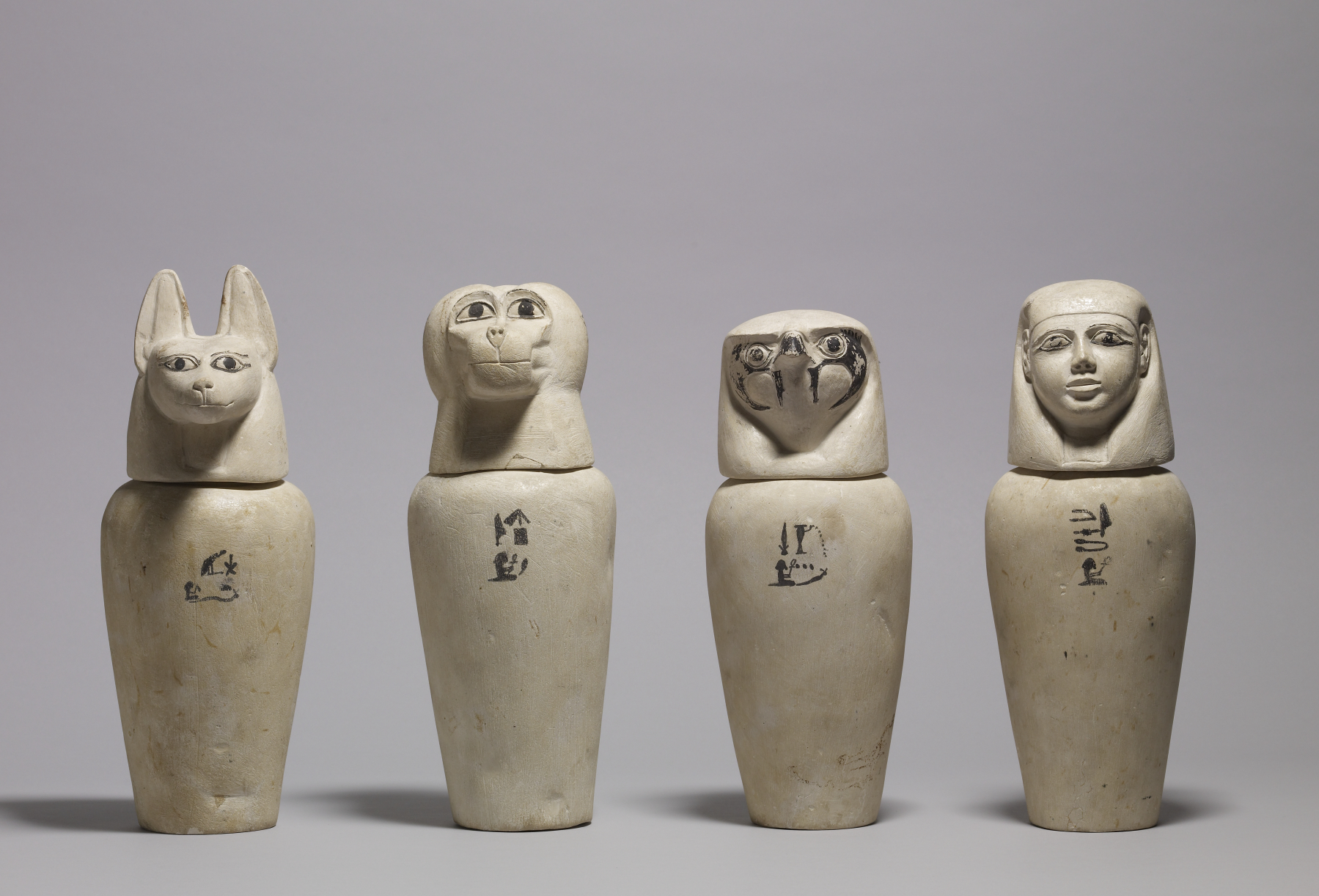A Complete Set of Canopic Jars
(Ancient Egypt and Nubia )
This set of canopic jars was made to contain the internal organs removed from the body during the mummification process. The four sons of the god Horus were believed to protect these organs. The jackal-headed Duamutef protected the stomach; the falcon-headed Qebehsenuef, the intestines; the baboon-headed Hapi, the lungs; and human-headed Imsety, the liver.
Provenance
Provenance (from the French provenir, 'to come from/forth') is the chronology of the ownership, custody, or location of a historical object. Learn more about provenance at the Walters.
Dikran Kelekian, Paris and New York; Henry Walters, Baltimore, 1912, by purchase; Walters Art Museum, 1931, by bequest.
Geographies
Egypt, Araba al-Madfuna (Abydos)
(Place of Origin)
Egypt (Kid-Friendly)
Measurements
Qebehsenuef: 12 5/8 x 4 5/8 x 5 1/8 in. (32 x 11.7 x 13 cm);
Imsety: 13 9/16 x 4 3/4 x 5 3/16 in. (34.5 x 12 x 13.2 cm);
Duamutef: 14 3/16 x 5 11/16 x 5 5/16 in. (36 x 14.4 x 13.5 cm);
Hapi: 13 3/8 x 4 13/16 x 5 5/16 in. (34 x 12.3 x 13.5 cm)
Credit Line
Acquired by Henry Walters, 1912
Location in Museum
Accession Number
In libraries, galleries, museums, and archives, an accession number is a unique identifier assigned to each object in the collection.
In libraries, galleries, museums, and archives, an accession number is a unique identifier assigned to each object in the collection.
VO.7 (41.171, 41.172, 41.173, 41.174)


